If you love collecting sea shells then you probably also have a fondness for nature and wildlife. The two seem to go hand in hand. So when you crouch down to the sand with that bucket in your hand you might occasionally ask yourself, “Is there any reason I shouldn’t collect this seashell?” That question is exactly what inspired me to create this guide to ethical shell collecting.
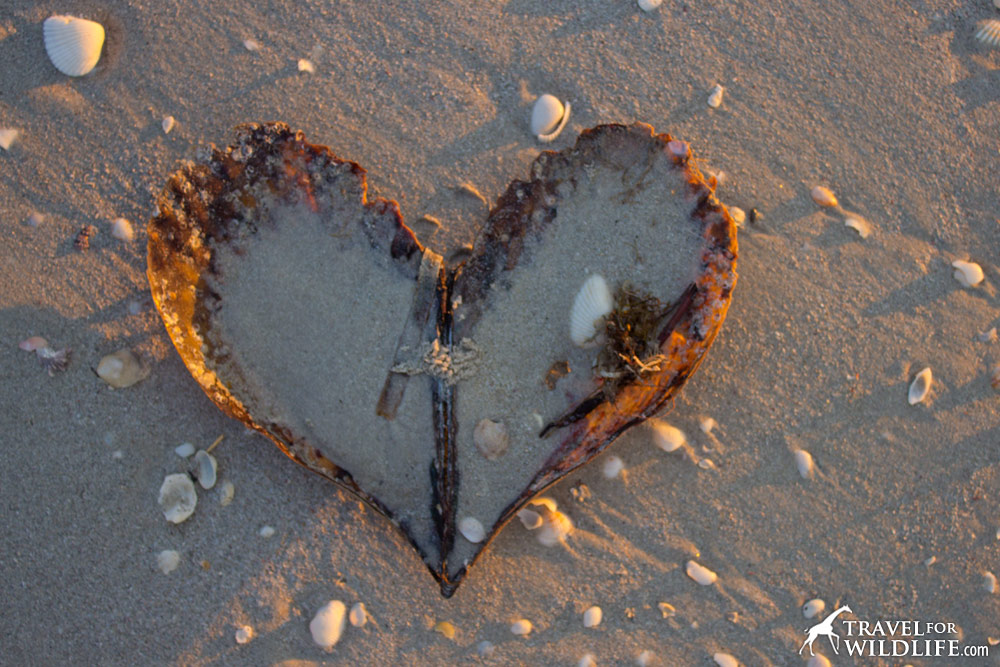
To help answer this question, I joined forces with the most experienced sheller I know: my mom. The bumper sticker on the back of my mom’s minivan reads GO TO SHELL. Beneath it is printed the name of what many consider the best shelling beach in the world: Sanibel Island, Florida.
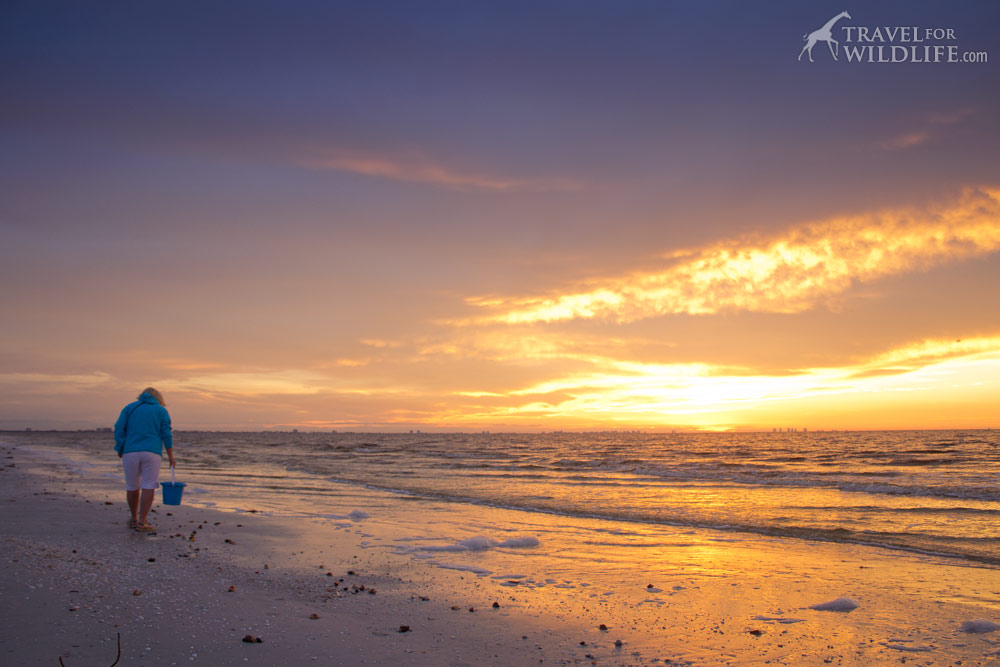
She could probably spend the rest of her life strolling the beach and looking for the most beautiful specimen of each and every shell species. And she’s not alone. Thousands of shellers pack the beaches of Sanibel each year, searching for their own treasures. And Sanibel is just one of many famous shelling beaches around the world.
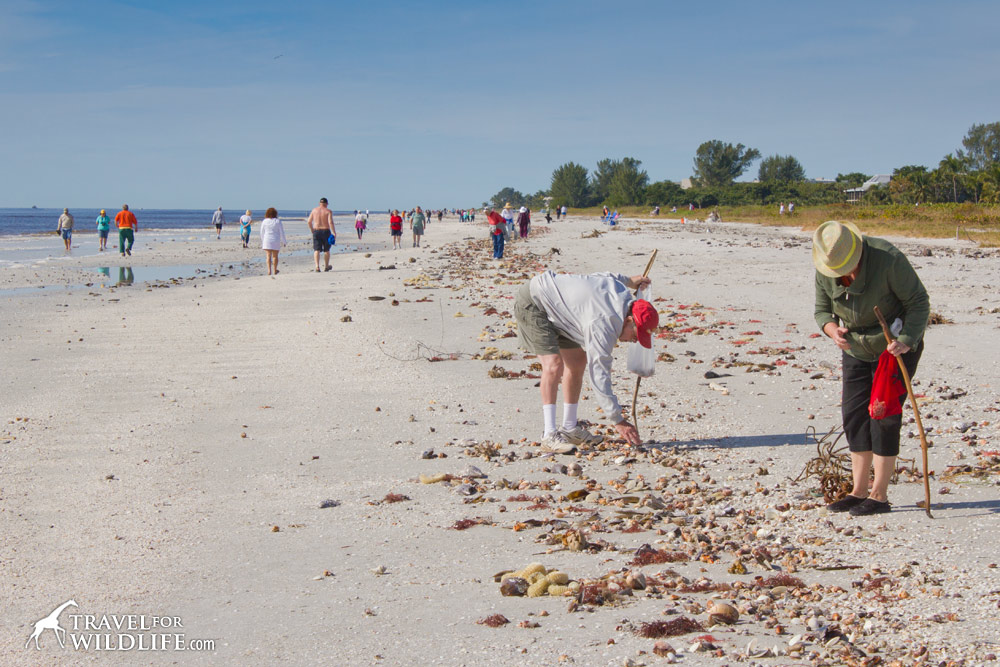
When I was a kid I collected all sorts of natural mementos, from skulls to stones to feathers, and as I began to travel more I started grabbing shells from various beaches around the world. But now that I’ve grown a bit older my collecting urges have faded. Mostly because, while visiting wild places, I’m used to being instructed over and over to “take nothing but photos and leave nothing but footprints.” Now the idea of walking a beach and grabbing bucketfuls of animal remains (which of course is what a shell is) makes me cringe a little. So I decided to spend a week shelling in Sanibel with my mom, learn what it’s all about, and come up with my own guide to eco-friendly shelling.
But I got a little more than I bargained for. An unusual combination of forces, including a huge storm and a red tide event, washed up millions of creatures onto the beach, both living and dead. It was unlike anything I had ever seen. I finally had a chance to meet the living animals behind the shells.
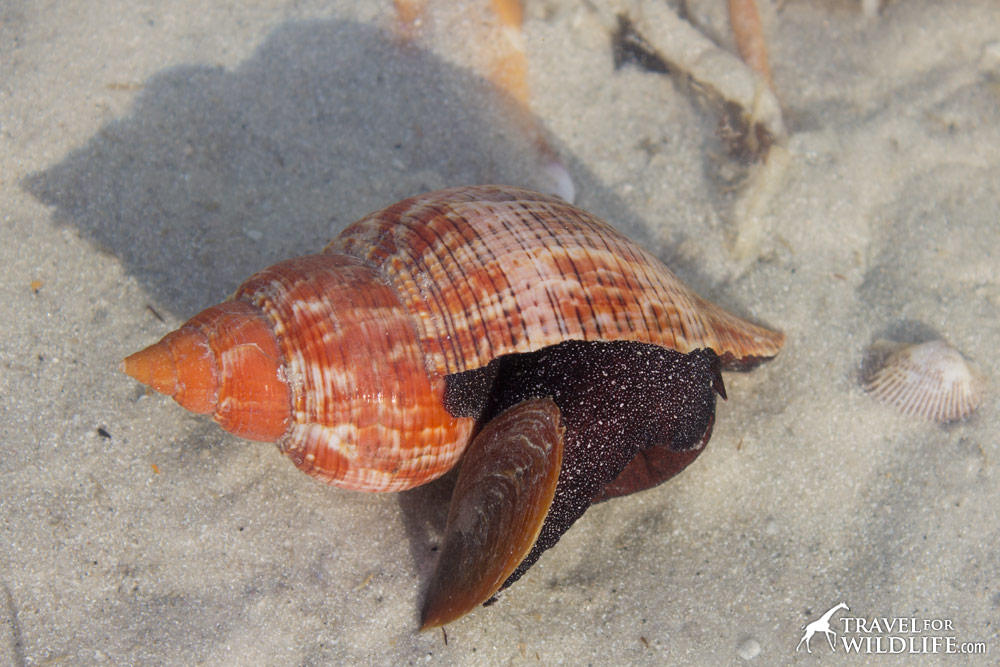
It was both fascinating and heart-wrenching to see. Long tidal pools had formed in depressions on the beach where all sorts of rarely-seen creatures were moving about as if they were still on the bottom of the ocean. But many more were stranded high and dry on the sand, waving their mysterious anatomies and hoping for the tide to return soon. So it was with a peculiar mix of joy and sorrow that I began to explore the living shells of Sanibel Island. It gave me a new-found appreciation for the charismatic little creatures that create all these shells and depend upon them for their homes.
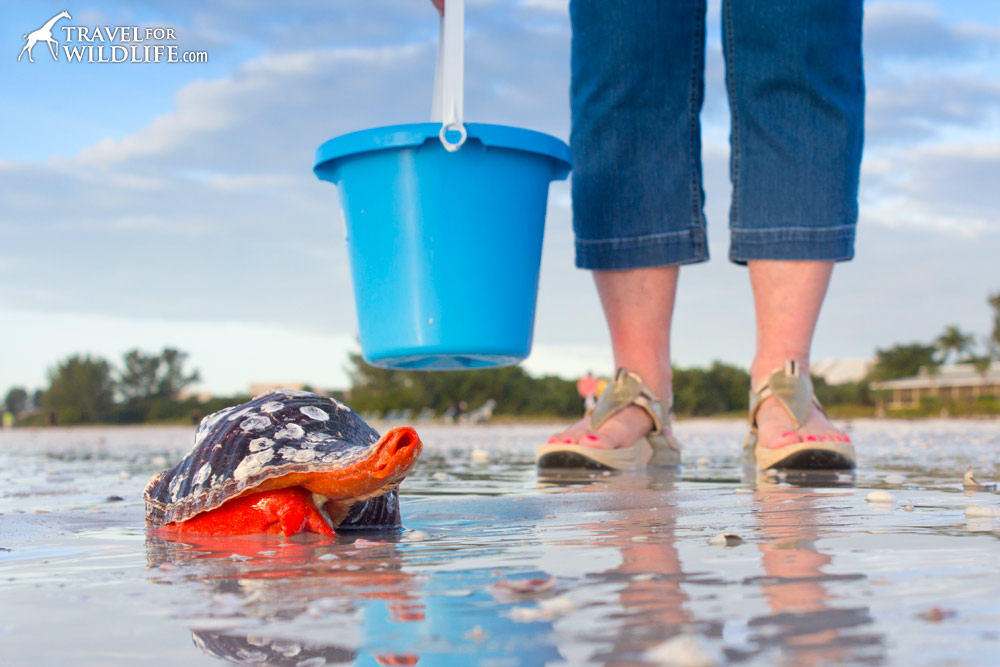
A Guide To Ethical Shell Collecting
I’ve formatted this guide as a list of tips for responsible seashell collecting practices, organized from basic to advanced.
BEGINNER (Start Here)
1) Don’t take anything that is alive
WHY: This is pretty basic, but these animals are individuals just like you and me, trying to live their lives.
Ethics are always a personal opinion, and my personal opinion is that killing an animal just to display some of its body parts is wrong. Also keep in mind it is illegal in Sanibel and Lee County (according to the laws about recreational sea shell harvesting in Florida) to “harvest or possess any shells that contain a live organism except for oysters, hard clams (quahogs), sunray venus clams and coquinas.”
If for some reason you’re on the fence about this one and wondering what’s the big deal about killing a sea snail, then take a look into the eyes of this Florida Fighting Conch and ask yourself if you really need this shell more than she does.
If you need help figuring out what is alive and what is dead, see our article How To Figure Out if a Sand Dollar, Starfish, Egg Case, Urchin, or Sea Shell is Alive or Dead.
Tip: If you do find a live creature stranded on the sand, whatever it may be (a shell, an egg case, a starfish, a crab, an urchin, or a sea cucumber) feel free to pick it up gently with your hand (if it can’t harm you) or a bucket and return it gently into the sea as deep as you can walk. Please don’t throw it like a baseball! The odds of these animals surviving in the baking sun are quite low unless the next tide soon returns them to the sea. Yes, they may wash up again, but by returning them to the ocean you are at least giving them a chance.
A note about shell shops.
Virtually every specimen for sale in a shell shop or souvenir shop comes from a living animal that was killed for the sole purpose of making a souvenir. That’s why they are in such perfect condition. Some are caught unintentionally as “bycatch” from the commercial fishing industry and others are intentionally harvested. If you wouldn’t kill a living animal on the beach for your collection, then you shouldn’t buy one at a shell shop either.
INTERMEDIATE (You’re Getting Good at This)
2) Leave Spiral Shells
WHY: Hermit crabs depend on empty spiral shells of all sizes for their survival.
Sure, spiral shells are some of the most beautiful shells you can find. But there is another collector out there who needs them even more than you do: the hermit crab.
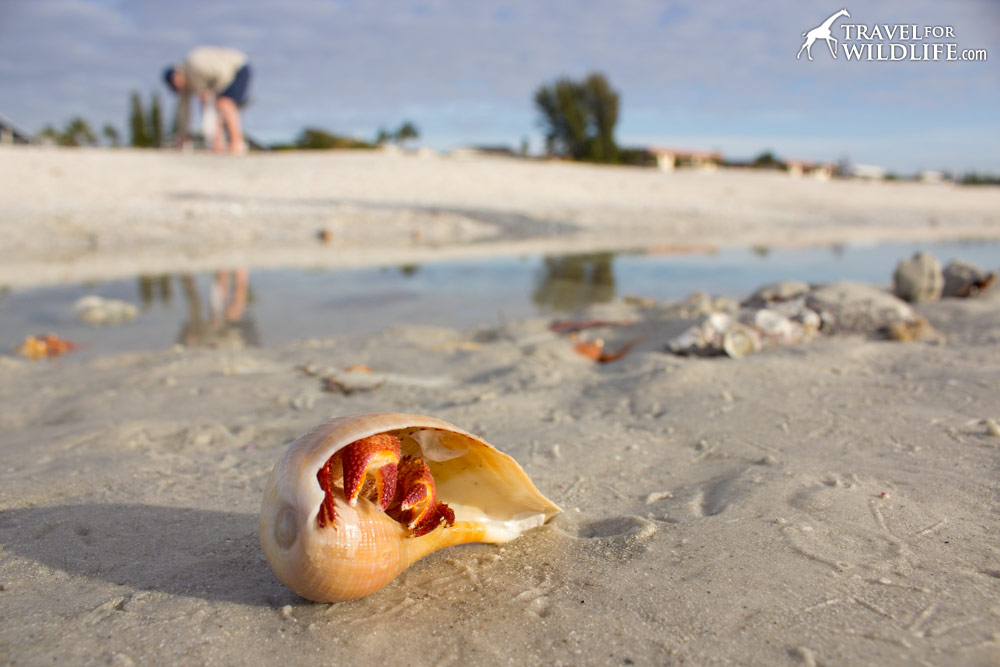
There are more than a thousand species of hermit crabs worldwide, and each one of them depends on empty sea shells for survival. Of course you wouldn’t take a spiral shell that already had a living hermit crab in it, but by taking empty spiral shells from the beach you are depriving those same hermit crabs of their next home. As hermit crabs grow, they must move into ever larger shells. If a hermit crab can’t find a larger shell, it will die of exposure or predation.
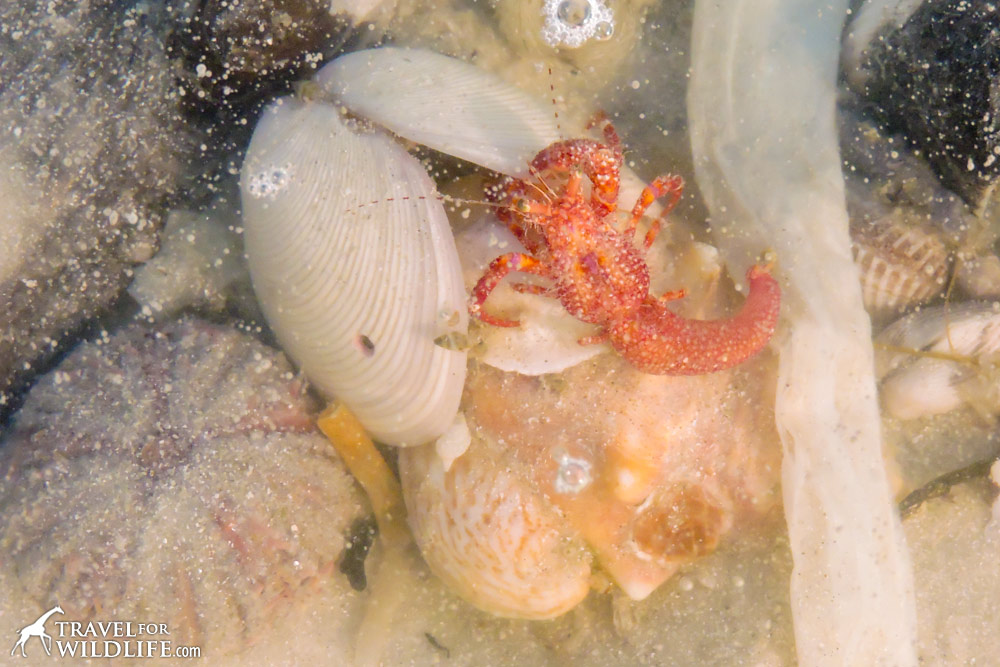
Here’s an amazing segment from a BBC program showing how difficult it can be for hermit crabs to find a shell of just the right size.
During our week in Sanibel we found spiral shells of every size containing hermit crabs, from microscopic to gigantic and everything in between.
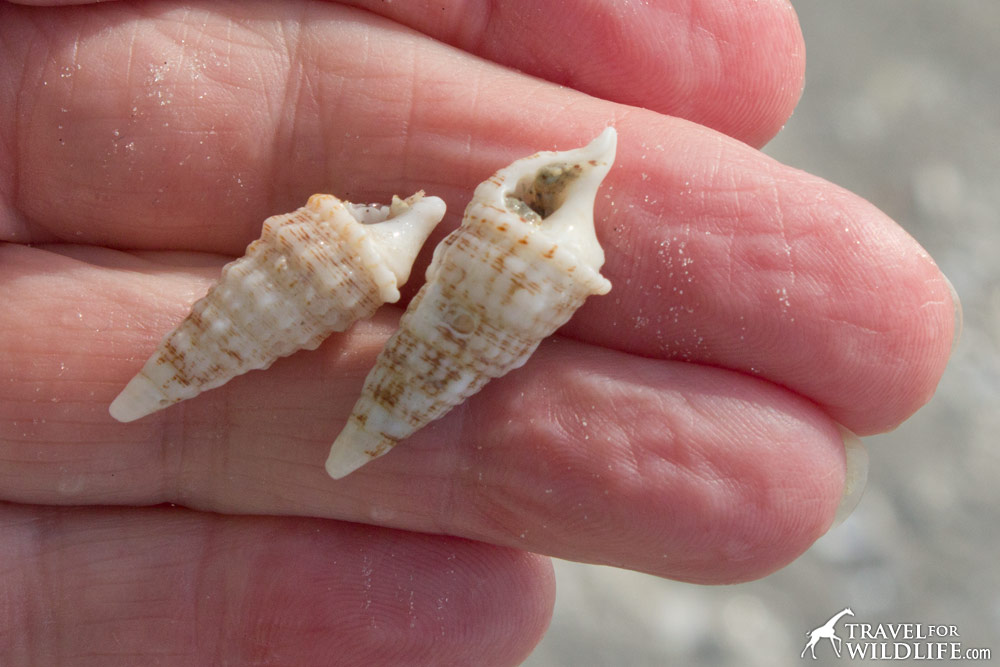
We also found a huge dead hermit crab who probably couldn’t find a large enough empty shell to move into. The only shell that could fit this guy would be a large horse conch and these are especially difficult to find because collectors snatch them all up!
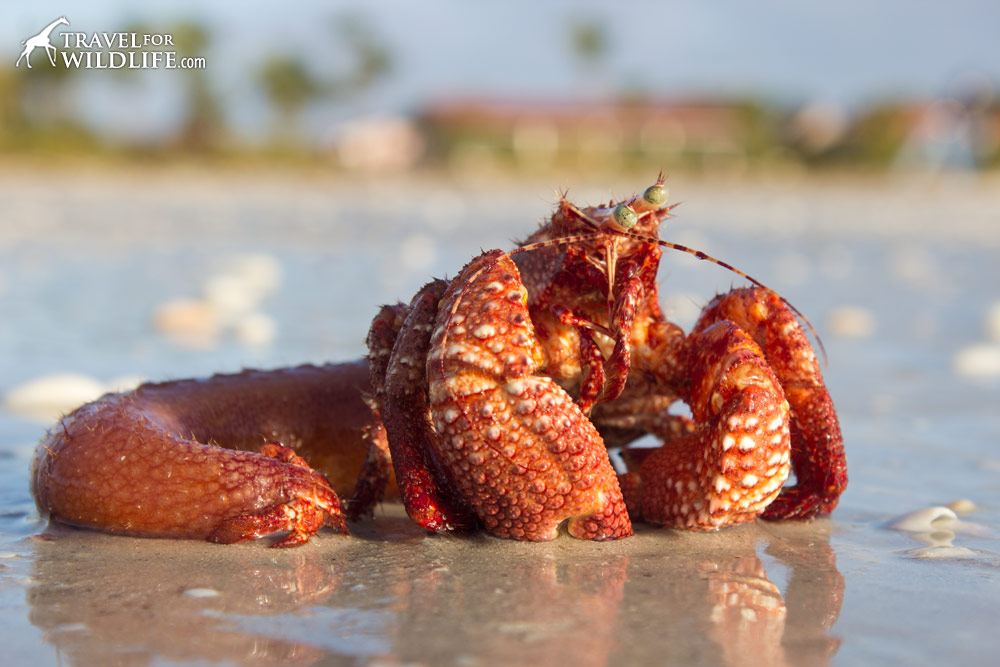
If you feel you just have to have a certain spiral shell for your collection, please only take one and leave the rest for someone who really needs it!
ADVANCED (You’re a Champion for Wildlife and Biodiversity!)
3) Take Less, or Better Yet, Take Only Photos
WHY: A wide variety of plants and animals depend on dead shells for their survival.
All shells play a role in natural ecosystems. If someone walked by your yard everyday and collected a handful of dirt, saying to themselves “they don’t need this dirt, what harm will one handful do?” you might be a bit irritated. If a hundred people did it every day, you might start to notice some effects in your own ecosystem, like your grass is gone and your house is eroding into a hole. The same is true for shells on beaches.
One scientific study on shell collecting shows that increased tourism is directly correlated to a reduction in the number of shells found on a beach. This may have a string of consequences on natural processes including, according to the study, “increased beach erosion, changes in calcium carbonate recycling, and declines in diversity and abundance of organisms, which are dependent on shell availability.”
In another part of the world, in Mauritius, it has been estimated that 60% of the shells have disappeared. This is due to tourists taking a bit of Mauritius home.
Here are some of the more obvious examples of how the healthy presence of shells benefits animals, plants, and ecosystems:
1) Sea grasses, corals, and anemones often use shells to anchor to the ocean floor.
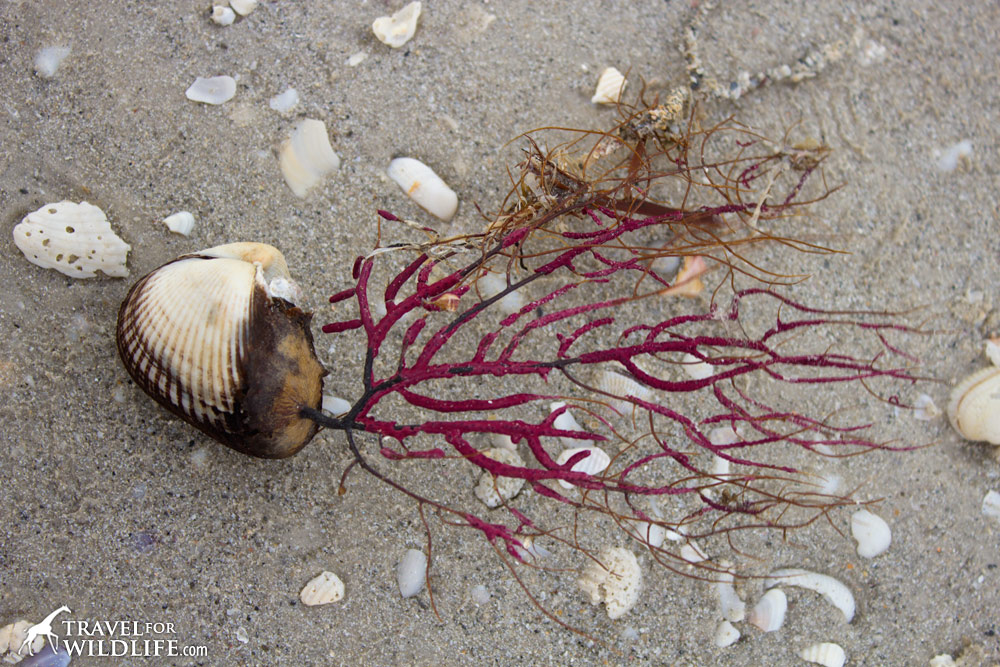
2) Many creatures like to make their homes on top of dead shells, like slipper shells, barnacles, limpets, and chitons.
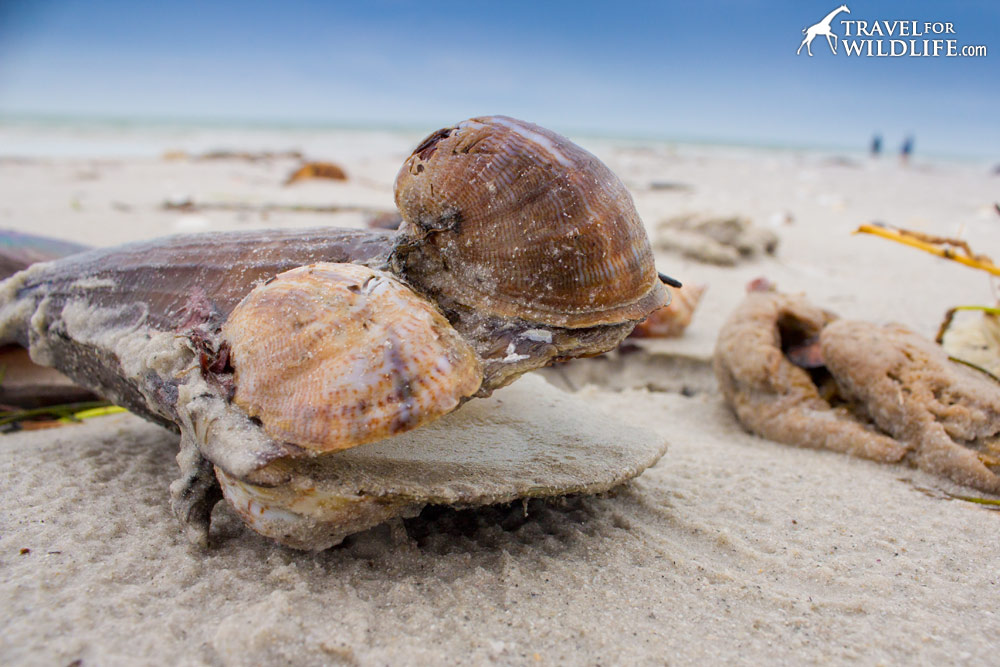
3) Some creatures use dead shells to camouflage themselves like sea urchins and the amazing Carrier Shells (called Xenophoridae).
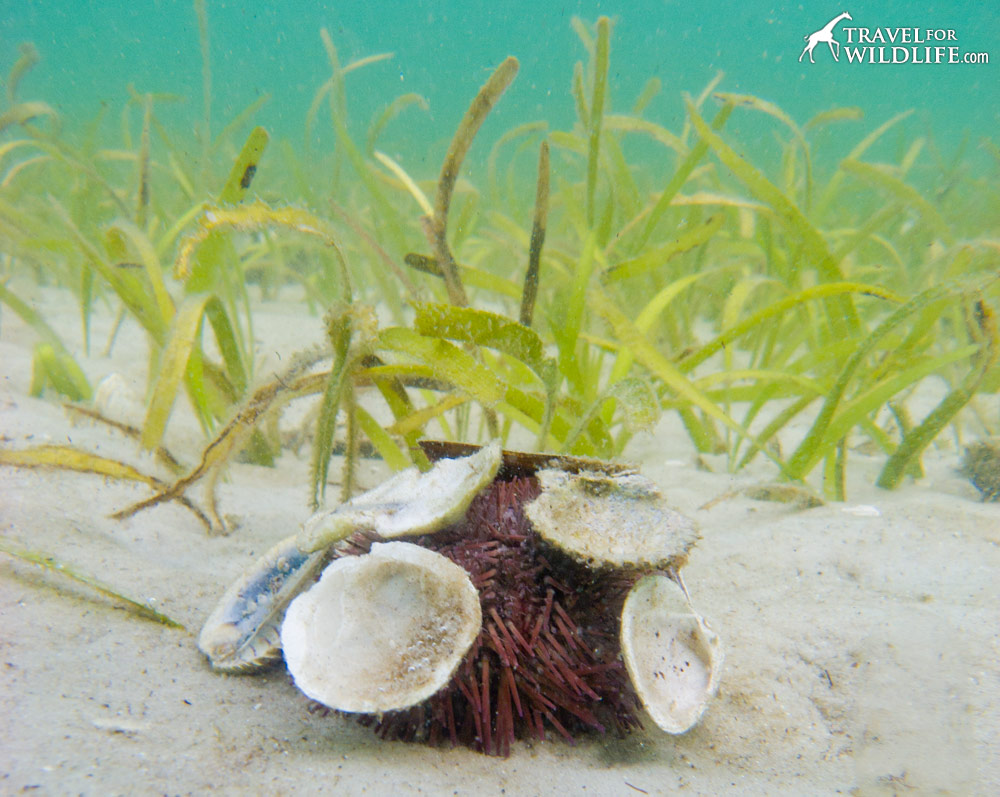
4) Small fish and octopus use discarded shells for cover and shelter. Here’s a great video of a small octopus who couldn’t find a shell for protection and had to use a plastic cup instead (until divers found some other shells for him to try).
5) Other organisms burrow into dead shells to survive, including endolithic algae and sponges.
6) Pieces of old shells are used as building materials by a variety of terrestrial animals. For example, the threatened beach-nesting bird, the Piping Plover, uses shells to line its nest. The male Piping Plover is the one who constructs the nest scrape and then lines it with seashells. (Photo by Amanda Pachomski, Long Island Bird Conservation Manager at Audubon New York, Be a Good Egg NJ NY)
7) Various marine animals use shells as a building material as well. Some marine worms (pictured below) use bits of shell to construct the protective tubes in which they live.
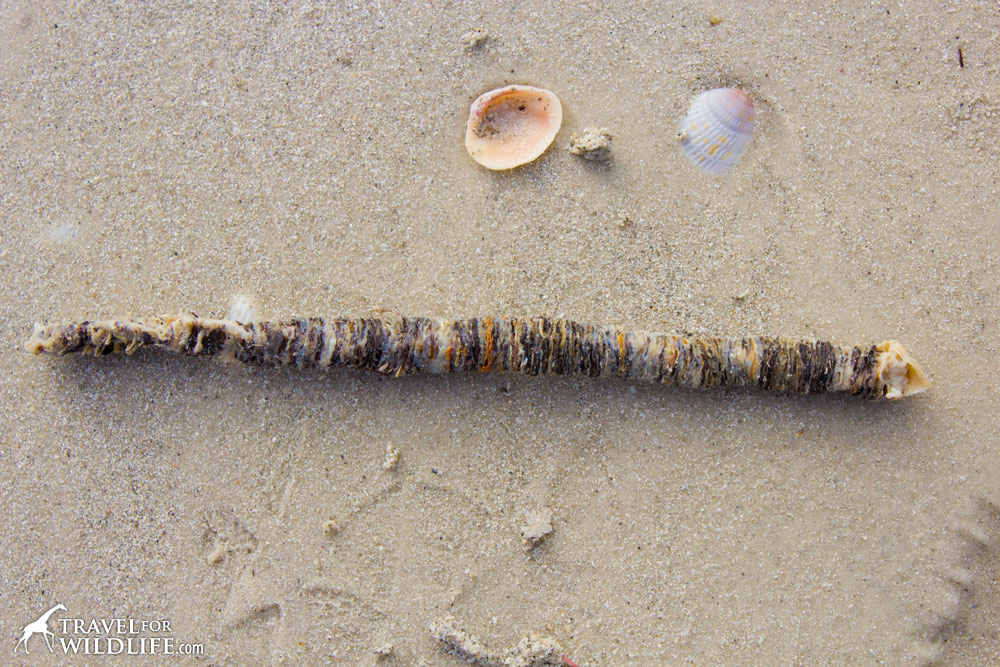
8) Birds, crabs, and many other organisms depend on the remains of washed-up sea creatures for food.
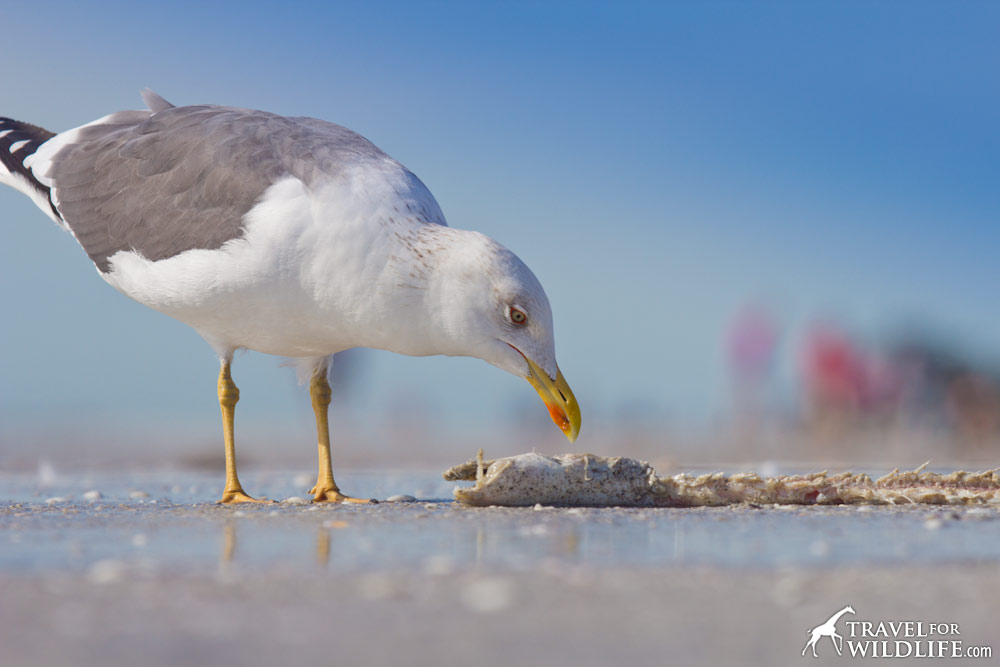
Remember, an empty shell washed up from a storm today may end up as an empty shell back in the ocean tomorrow where thousands of creatures rely on it for survival.
So is there a danger that humans are going to take every shell from the beach? Of course not. Will one person taking a handful of shells kill a hermit crab and an endangered bird? Nope. But our cumulative impact continues to grow as our population expands and more and more visitors appear on our beaches. Think about where your shells are going to end up and ask yourself if they’re doing the world more good in a bag on your shelf or out in the natural ecosystem where they came from. Shell collecting can still give you great happiness, even without removing thousands of them from their natural habitat!
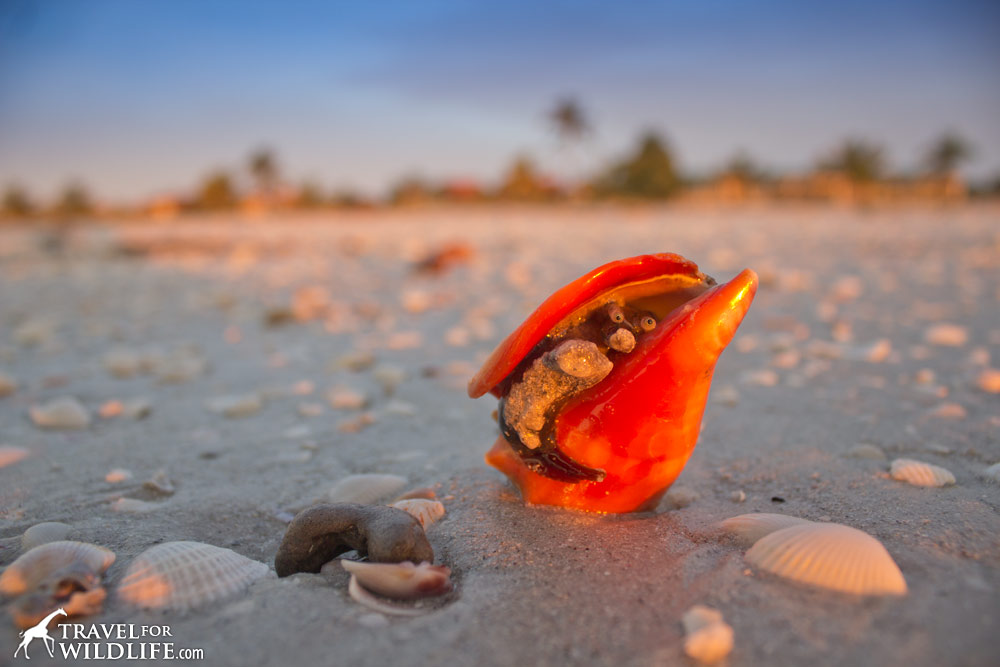
I admit I felt the urge to possess some of the beautiful shells I saw. But then I realized I had another way to collect shells right in my hand: a camera. I thought to myself, Why not start a photo collection of all the best shell specimens that you discover on the beach? Then it can be shared online for the whole world to enjoy and learn from, while the shells still get to fulfill their natural role! Want to see my cool shell collection? Check out my Virtual Shell Collection: a Photo Gallery of Living Shells from Sanibel Island!
Did you find this article helpful? Pin this image!
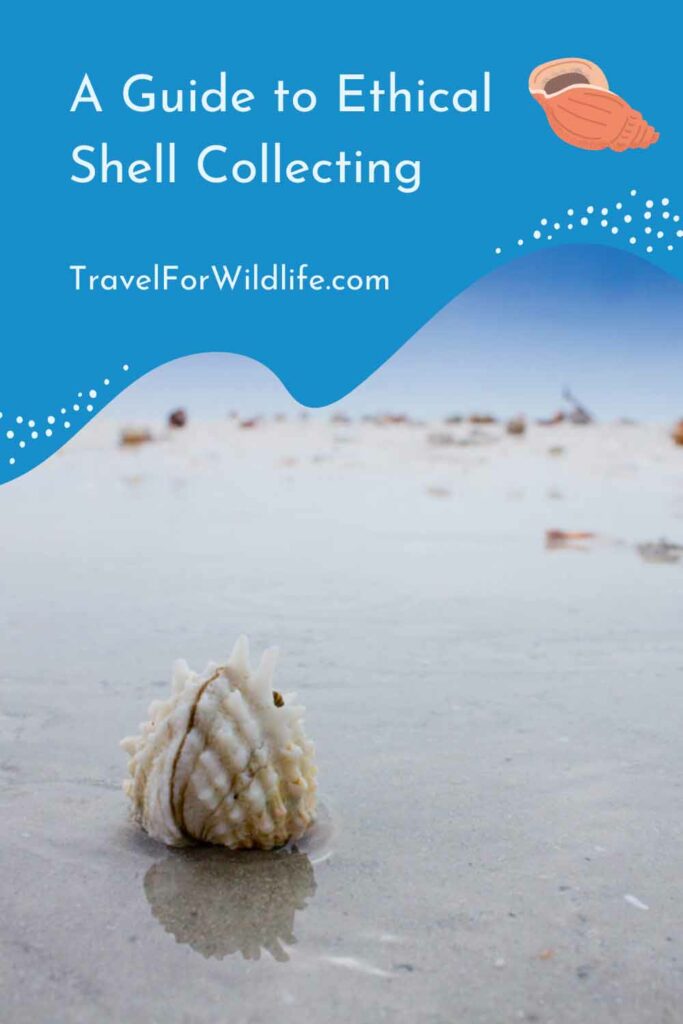
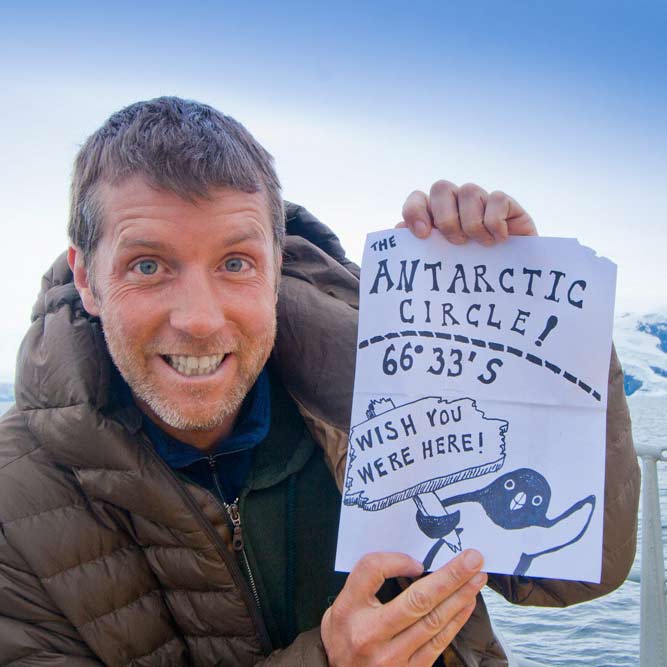
Hal Brindley
Brindley is an American conservation biologist, wildlife photographer, filmmaker, writer, and illustrator living in Asheville, NC. He studied black-footed cats in Namibia for his master’s research, has traveled to all seven continents, and loves native plant gardening. See more of his work at Travel for Wildlife, Truly Wild, Our Wild Yard, & Naturalist Studio.

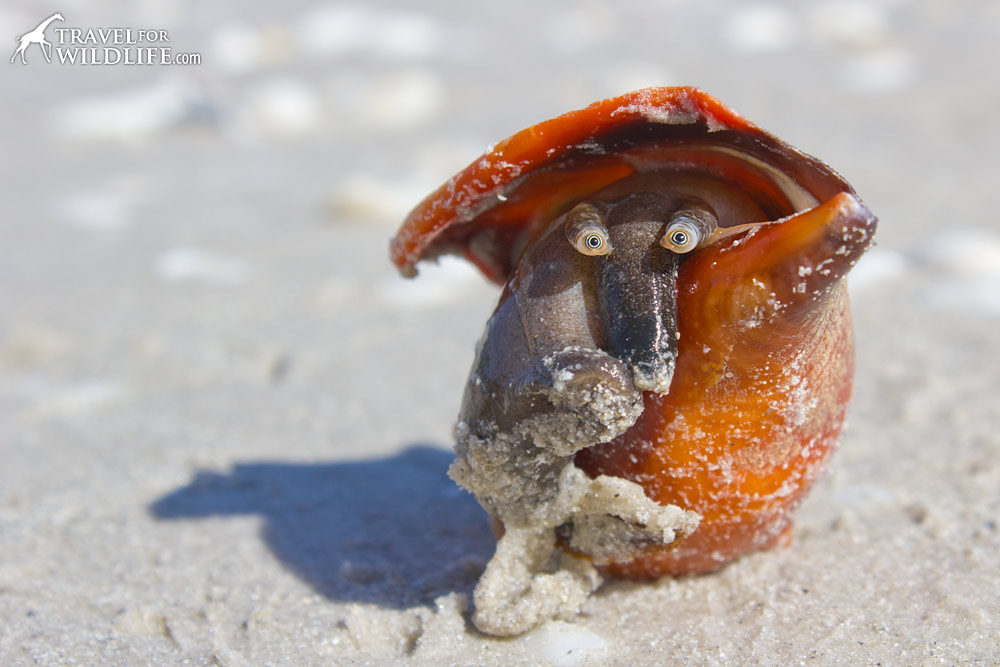
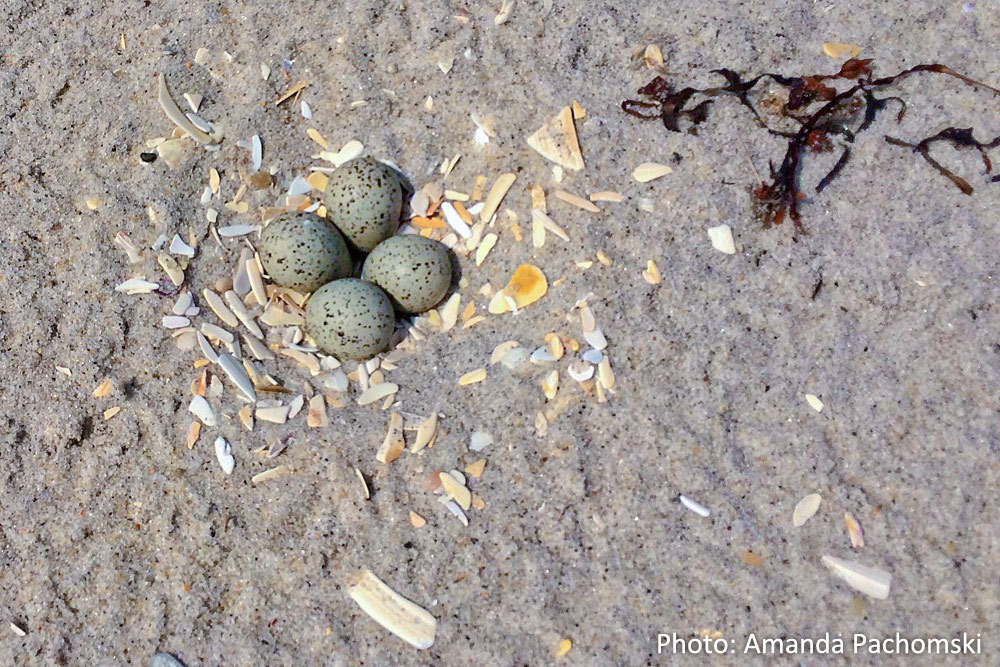
Kathleen
Wednesday 7th of February 2024
I would like to know where to send sea shells that I have collected mostly fro thrift stores over the years so they can be reunited with some hermit crabs
cristina garcia
Wednesday 13th of March 2024
Hi Kathleen, I'm afraid I don't know of anybody who is actively returning shells to the sea. But there are more than 800 species of hermit crabs living in temperate and tropical oceans around the world, so I think your best bet is to take them to your nearest ocean and give them a dump!
Nif
Monday 7th of November 2022
Lovely article! I'm currently traveling around Asia and coming across so many shells I've never come across before in England. I've been taking collections to my hotel room so I'll have a week or so admiring them, taking photos, handling them, just generally enjoying them. On my last day I take them back to the beach - a big chunk of novelty has worn off by this time and it feels easier to let them go. I know they would sit in a cupboard and be barely noticed if I took them home. This might help other people who feel torn about leaving them
cristina garcia
Sunday 27th of November 2022
Lovely! Hope you are enjoying your trip!
Aditi Singhvi
Tuesday 24th of May 2022
I'm not a shell collector. Heck, I can't even identify most of them. I recently visited a virgin secluded beach along the Balasore shoreline in Odisha, India. I saw millions of ghost crabs there and discovered so many beautiful shells. I picked them up because of the violet and purple colours. I wish I had come across this article before, I would've left them right there. Thank you for leaving this piece of awareness out there. You're helping people who care learn and change behaviour to leave the ecosystem undisturbed.
Haylea (Hay-lee)
Thursday 17th of June 2021
Thank you for this! This is helpful in September I'm going to Panama City beach Flordia I want to make sure I won't do any damage to the amazing living sea creatures when I go in September I'm going to take one shell then rest of the time if I find a beautiful shell I'm going to take a picture of it. I'm happy I found this! Again thank you for this I have this bookmarked so I can remind myself of this advice
Hal Brindley
Friday 18th of June 2021
Thank you so much Haylea! I'm so glad you found it helpful!
Kay
Monday 10th of May 2021
Thanks for this my dude.
I’m an avid I-can’t-live-without-this shell collector and now that I live dangerously close to the beach, I wanted to make sure I wasn’t doing any damage to my environment. This will definitely help me keep myself in check.